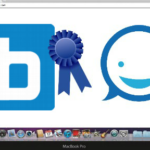
post
March 3, 2015
SMS Customer Support: Mobile as the Preferred Service Channel
According to a recent Gartner report, “by 2015, at least 60% of Internet users will opt for mobile customer service applications as their first option.” This is a significant shift that brings with it enormous challenges and opportunities. Companies and brands that honor this “mobile first” preference must understand the intimate relationship that people have with their mobile device, and how their brand experience on these devices will shape the relationship they are building with each individual.
It is also important to understand how people are currently using their mobile phones, and to extend existing behavioral patterns into the new context of SMS customer support. For example, despite the popularity of email, social networks, and web browsing on mobile devices, text messaging is by far the most common activity people do on their phone with 81% of American adults texting. Texting is even more popular than phone calls: on average, people receive and recieve 42 texts a day, compared to six calls.
The natural conclusion would be that if most people want SMS customer support on their mobile device, and texting is the most common activity on a mobile device, then offering text-based support makes perfect sense. A study conducted by Harris Poll and commissioned by OneReach found that 64% of customers who text would rather text than call for customer service. However, crafting a SMS customer support strategy requires some background knowledge.
What Customers Expect From Text
To implement a text support strategy, businesses have to consider what the implied promises are of SMS as a channel. For example, most people who text are usually doing so with someone they have a relationship with. Whether it’s friends, family members, or co-workers, people tend to text with those that are close to them. This means that they expect to get a reply, or to offer one. In other words, it is very conversational.
Grammar and spelling rules may not always apply, but people expect some sort of indication that you got their message. Even a simple “ok” will suffice. Still, the second someone doesn’t reply to a text, people natural to assume that either something went wrong, or that they’re are being ignored. In either case, it has a negative connotation.
So how does this impact SMS as a viable customer service channel? Simple- companies that prioritize customer experience should commit to the fact that people are used to texting with other people and let them text directly with one of your employees/agents. Simply put–text support is a two-way street.
Another way to show that you understand your customers’ preferences and the implied promises of this channel is to allow the them to initiate a text message to your business the same way they are used to doing it with friends and family- to a number already saved in their contact list. Once customers know they can call or text you on the same number (even your existing toll-free number), they will be more likely to save that number in their phone. Then, when they do receive a text from you, it won’t be coming from an unknown number, or worse yet some weird looking 5-digit short code.
How To Implement a SMS Customer Support Strategy
How can businesses manage the inbound text messages they receive? Step one is to answer them, of course. However, this isn’t just with a robot (though a sophisticated ITR- Interactive Text Response- system can be used to effectively allow for appropriate levels of self-service and pre-chat data collection for routing purposes). The companies who are truly committing to offering a delightful customer experience will answer each inbound text message with a response from a real person.
Contact center managers are realizing that companies like OneReach can make it so their existing web-chat clients serve as the agent interface for these text-to-chat conversations. The curve ball is that even though text-to-chat sessions are far more affordable than phone conversations, the number of interactions may go up due to the fact that you have made it so easy for your customers to contact you. The way to control costs, then, is through smart automation.
Picture this–a customer initiates a text conversation and asks for help with resetting their password. That request is responded to by a real person, who then sends the customer into an automated interaction that walks the customer through the process step by step. Even better, at each step the automation engine uses relevant information pulled form a CRM product to personalize the interaction. So really, it’s personal interaction blended with personalized automation. The result is a satisfied customer and a less expensive SMS support experience.
To learn more about customers’ preference for text for customer service, download the free Harris Report here.
Photo from Pixabay. Edited.
Stay up to date
Latest Articles




